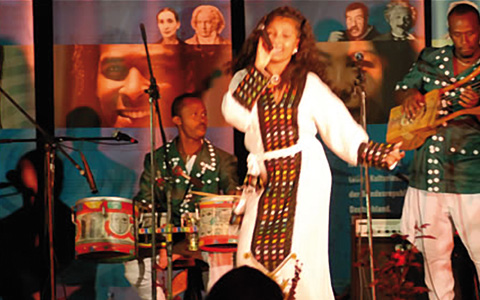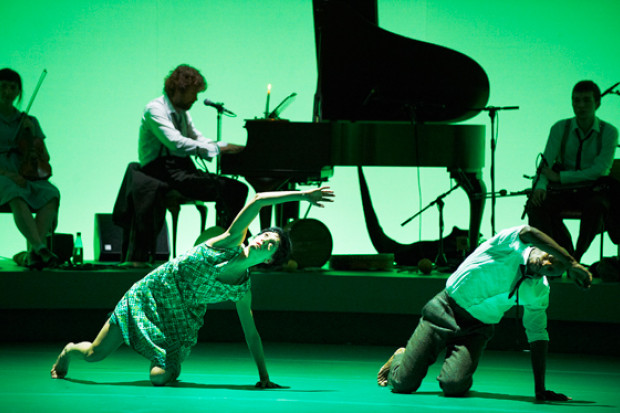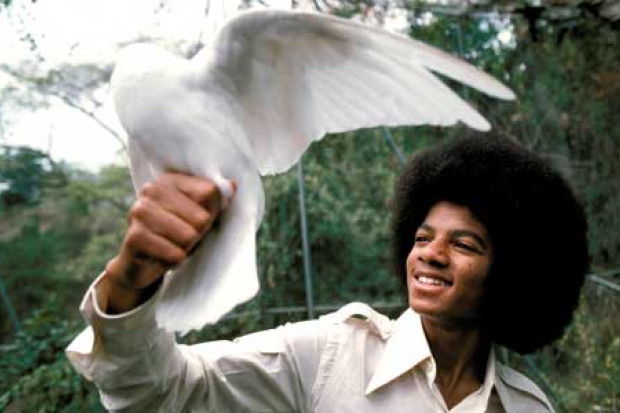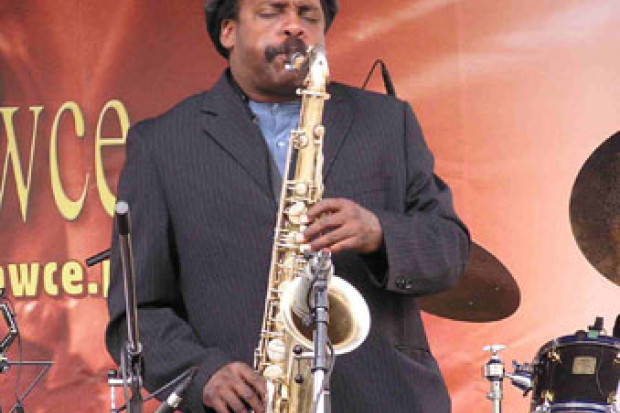
Heaven and Earth
In Addis Ababa you wake to music. Calling to the faithful, the Orthodox priest and the Muslim muezzin fill the city with chanting in the minutes leading up to sunrise. The effect is peaceful and mystical, recalling music’s prehistoric roots in invocation and supplication. It is also the first of each day’s many reminders that, in Ethiopia, ancient musical forms flow naturally into contemporary life, from morning to night, in heaven and on earth.
Ethiopians do not take the gift of music for granted. It is less than two decades since the fall of the Mengistu regime which, from 1974 to 1991, used curfews, intimidation and censorship to reduce music and other cultural life to the dismal role of revolutionary propaganda. But these days the clubs are full, the recording industry is vibrant, and the people’s irrepressible love of traditional music is flourishing again.
I spent a week in Addis last March attending the ninth annual Festival des Musiques d’Ethiopique, or Ethiopian Music Festival. There, I experienced for the first time the sublime ecstasy of the country’s music and dance. Street life in the city has urban pace but village rhythm. Even the pop music issuing from the bars and coffee shops has its roots in the basic features of the tradition: lopsided rhythms, sensuous call-and-response, and the dramatic lines of the pentatonic scale, with their large intervals and exotic resolutions.
In the churches, priests sing hymns in the ancient language of Ge’ez while beating time with their prayer sticks. Taxi drivers sing along with tunes that are centuries old. Blind men in rags play the washint, an end-blown flute made of wood or cane. Radios reverberate with the sounds of the one-stringed masenqo, the lyre-like krar and the deep buzz of the begena, a large stringed instrument said to have been used by David to soothe King Saul’s nerves three thousand years ago. It’s all of a piece. Even the Golden Era big-band music of the sixties and early seventies shares with the latest electronic pop production the distinctive sound of qenet, the unique modal system developed by Amharic musicians from the central highlands around Addis Ababa, which is at the heart of all music here.
Though the festival included bands from France and Brazil, the focus, as it has been through its nine-year history, was on this rich native sound. Festival organiser and music historian Francis Falceto has a deep understanding of the tradition, and his interest in musical influence and the relationship between music and society has ensured that this annual event displays the range and continuity of Ethiopian music. So when a group of tribespeople from the Gamo highlands of southern Ethiopia perform chants and dances arising from rituals associated with fertility, harvest and war, you hear something that echoes the Ethio-jazz of Nubian Ark and the music and dance of the Ethiocolor cultural group, because the essential rhythms and movements of the old have been preserved in the modern.
Much of the appeal of Ethiopian music comes from its openness. In the 1920s, the future emperor Haile Selassie brought a brass band from Jerusalem to form his Bodyguard Orchestra, the first in a long line of big bands that accompanied the great vocalists of the Golden Age. In the 1960s, when thousands of American Peace Corps volunteers arrived with soul, jazz and R&B records, local music took on a new twist. Adopting Hammond organ and electric guitars, it began to evoke the sounds of James Brown and Little Richard. Along the way, the pioneers of this time sang both traditional and popular repertoires, working with a variety of instrumental set-ups, and playing the large concert halls as well as the azmari bets (traditional music clubs) of Addis, where dancers accompany the songs by shaking their shoulders, heaving their chests and shimmying their torsos in the eskista dance, which is so free-spirited and intense it has to be seen to be believed.
And the contact with other cultures continues. In a derelict courtyard behind the National Theatre, I listened while saxophonist Henry Cook played washint with local master Abu Gebre. Cook first came to the festival in 2004 as a member of the US-based Either/Orchestra, and in the six years since his first visit, he has fashioned two hundred washints out of a variety of materials, as well as learned the melismatic subtleties of the instrument. Later, when he joined the French band ETH onstage, his probing solos, with their haunting timbre, prompted several local musicians to tell him that he ‘plays like an Ethiopian’.
Ethiopian history has had its share of bad times, but like religion, music has been a steady source of joy. The Mengistu repression is recent enough to remind the Ethiopian people of the preciousness and vulnerability of their musical heritage and to give impetus to its preservation. Addis Ababa’s nightlife is now fully rejuvenated and experiencing another renaissance, with a new generation of musicians listening to hip-hop, reggae and Afro-pop. The tradition lives on.
Published on 1 June 2010
Kevin Stevens is is a Dublin-based novelist and writer on history, literature, and jazz.














